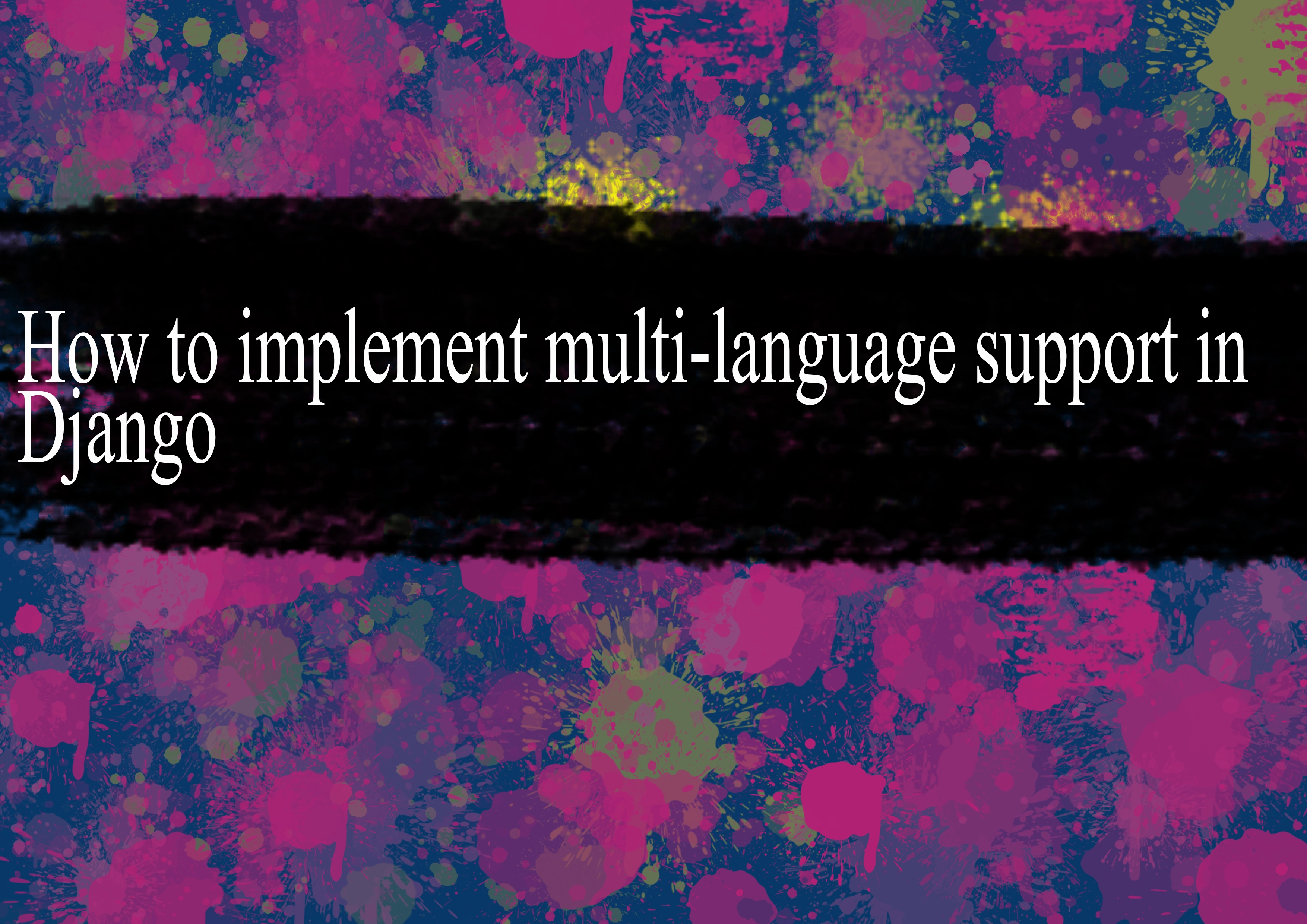How to implement multi-language support in Django

Implementing multi-language support in Django involves several steps. Django itself provides tools and features to make this process easier. Here's a general outline of how to achieve multi-language support in Django:
Configure Settings: In your Django project's settings.py file, configure the necessary settings for internationalization and localization. This includes specifying the list of available languages and setting the default language.
python# settings.py LANGUAGE_CODE = 'en-us' # List of available languages LANGUAGES = [ ('en', 'English'), ('es', 'Spanish'), # Add more languages as needed ] USE_I18N = True USE_L10N = True TIME_ZONE = 'UTC' USE_TZ = TrueEnable Middleware: Django provides built-in middleware for handling language preferences. Make sure to enable the
django.middleware.locale.LocaleMiddlewarein your middleware settings.python# settings.py MIDDLEWARE = [ ... 'django.middleware.locale.LocaleMiddleware', ... ]Translate Texts: Create translation files for each language you want to support. Django uses GNU gettext format for translation files. You can use the
gettextcommand-line tool or Django's management commands to extract translatable strings from your code and templates.bash# Extract translatable strings python manage.py makemessages -l <language_code>This command will create or update a
.pofile for the specified language. You'll need to manually translate the strings in these files.Compile Translations: After translating the strings in the
.pofiles, compile them into.mofiles using thecompilemessagescommand.bash# Compile translations python manage.py compilemessagesUse Translation Tags in Templates: In your Django templates, use the
{% trans %}template tag to mark translatable strings.html{% load i18n %} <h1>{% trans "Welcome" %}</h1>Language Switching: Provide a way for users to switch between languages. This could be done through a language selector in the UI, where users can choose their preferred language.
Handling Translated URLs: If you're using translated URLs (e.g.,
/en/about/and/es/about/), you'll need to update your URL patterns to include language prefixes.Localization of Dates, Numbers, and Timezones: Django's localization features also extend to formatting dates, numbers, and timezones. Use Django's built-in template filters (
date,time,localize, etc.) to display these values in the user's preferred language and format.Testing: Test your multi-language support thoroughly to ensure that all translated strings are displayed correctly and that the application behaves as expected in different languages.
By following these steps, you can implement multi-language support in your Django application, allowing it to serve users in multiple languages.
-
Popular Post
- How to optimize for Google's About This Result feature for local businesses
- How to implement multi-language support in an Express.js application
- How to handle and optimize for changes in mobile search behavior
- How to handle CORS in a Node.js application
- How to use Vue.js with a UI framework (e.g., Vuetify, Element UI)
- How to configure Laravel Telescope for monitoring and profiling API requests
- How to create a command-line tool using the Commander.js library in Node.js
- How to implement code splitting in a React.js application
- How to use the AWS SDK for Node.js to interact with various AWS services
- How to use the Node.js Stream API for efficient data processing
- How to implement a cookie parser middleware in Node.js
- How to implement WebSockets for real-time communication in React
-
Latest Post
- How to implement a dynamic form with dynamic field styling based on user input in Next.js
- How to create a custom hook for handling user interactions with the browser's device motion in Next.js
- How to create a custom hook for handling user interactions with the browser's battery status in Next.js
- How to implement a dynamic form with dynamic field visibility based on user input in Next.js
- How to implement a dynamic form with real-time collaboration features in Next.js
- How to create a custom hook for handling user interactions with the browser's media devices in Next.js
- How to use the useSWRInfinite hook for paginating data with a custom loading indicator in Next.js
- How to create a custom hook for handling user interactions with the browser's network status in Next.js
- How to create a custom hook for handling user interactions with the browser's location in Next.js
- How to implement a dynamic form with multi-language support in Next.js
- How to create a custom hook for handling user interactions with the browser's ambient light sensor in Next.js
- How to use the useHover hook for creating interactive image zoom effects in Next.js